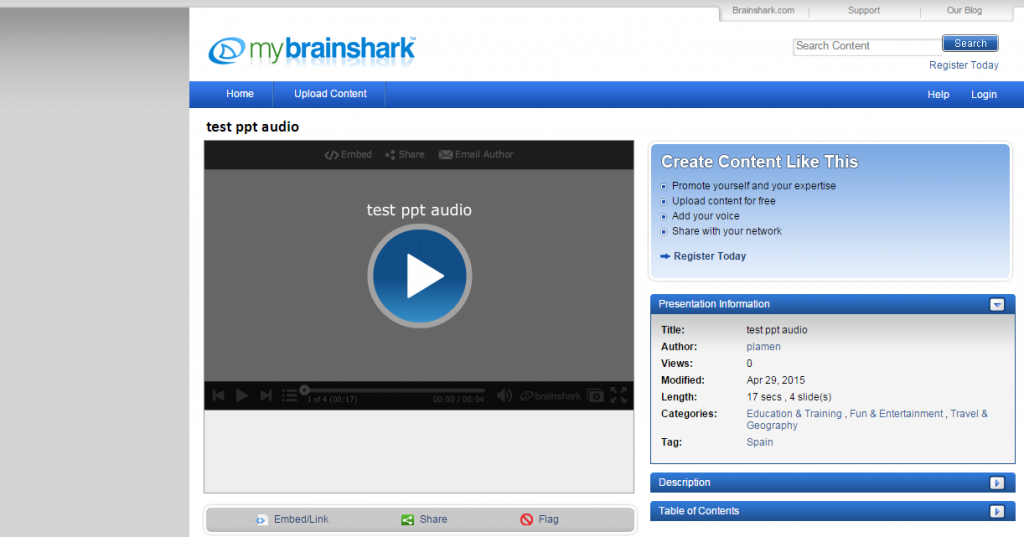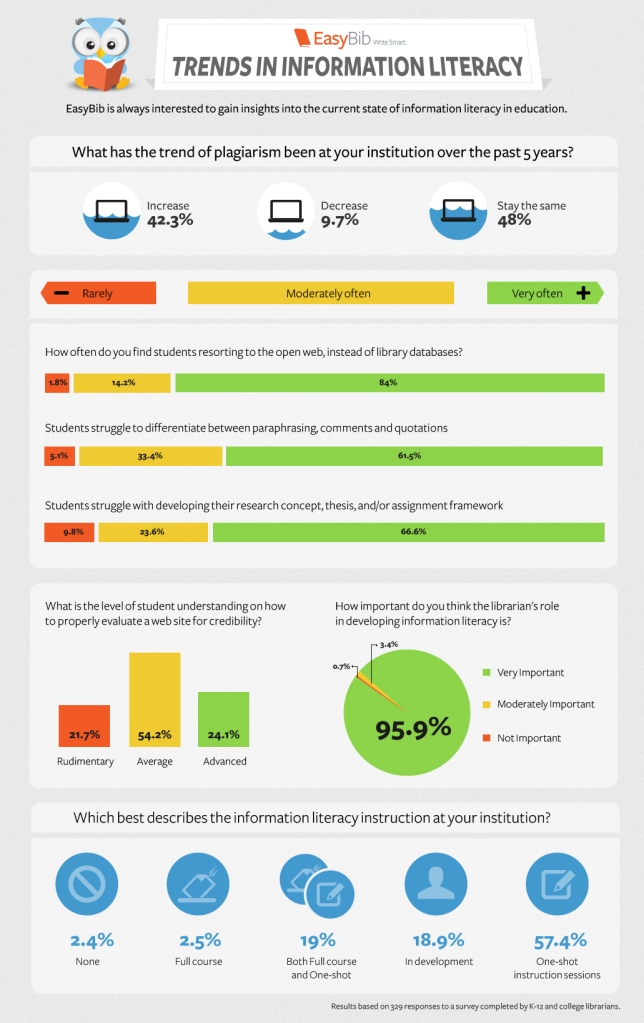Searching for "social media images"
Voice over presentation
Faculty request to lay voice over a presentation with pictures. Solutions:
Windows / PC

ppt voice over
Apple/Mac

voice over PPT on Apple
advantages:
– unfortunately, faculty are way too familiar with PPT. Familiar to the point that they don’t want to try something better.
– FERPA complient
disadvantages:
– too old. PPT is pre-Internet. It does not matter how much Microsoft is trying to adapt it, the concept is old. There is a myriad of cloud-based solutions, which do better job: https://blog.stcloudstate.edu/ims/2013/09/30/the-5-best-free-slideshow-presentation-and-creation-tools-for-teachers/
– too many files, too many variations
– PPT posted in D2L displays in the D2L Viewer. The visuals are there, but the voice is not. In order to hear the voice, students must download the presentation. Faculty must reflect this in the syllabus.
– faculty need to know how to upload on their web space and figure out URL, if PPT is not place in LMS (D2L)- if faculty places PPT in LMS (D2L), then it is behind password; nearly impossible to share (can share only with SCSU and/or MnSCU members.
– faculty must remember to indicate in the syllabus and/or D2L / Content that “in order to hear the voice over, user must download presentation.”

slideshare
advantages:
– it is a “social” app, like LinkedIn and Twitter. Tagged correctly, the presentation is a platform for “same-minded” people to discuss mutual interests.
– excellent for sharing: conferences, MOOCs etc.
– it has discussion group in LinkedIn.
disadvantages:
– voice over presentation: way to cumbersome compared to PPT. Watch their presentation
– by FERPA regulations, if the presentation contains personal data about students, it cannot be shared on SlideShare

mybrainshaark
advantages:
– it is a “social” app, like LinkedIn and Twitter. Tagged correctly, the presentation is a platform for “same-minded” people to discuss mutual interests.
– excellent for sharing: conferences, MOOCs etc.
– like PPT, very easy upload of pix and voice over. Better the PPT, since it is online and easy to distribute.
– easy to upload PPT and easy to voice over each slide
disadvantages:
– does not embed in D2L (it is D2L issue, not the app), but works perfectly as a link
– faculty must remember to indicate in the syllabus and/or D2L / Content that when clicking on the URL to the PPT, user must simultaneously press “Ctrl” key to open PPT in a separate browser window or tab
– by FERPA regulations, if the presentation contains personal data about students, it cannot be shared on SlideShare

voicethread
advantages:
– consistently voted through last 5 years by K12 educators as great interactive tool.
– video, images, audio and text.
– “constructivist” premiss: teacher and students can exchange asynchronously ideas by using images, video, text and audio.
disadvantages:
– free option has limited features.
– by FERPA regulations, if the presentation contains personal data about students, it cannot be shared on on this site.

mediasite
advantages:
– crude screen capture: faculty can run the PPT manually and narrate over it.
– dirty but fast
– easily shared online (URL ready)
– FERPA compliant
disadvantages:
– students cannot comment (compared to VoiceThread)

- lodestar
advantages:
– free: http://lodestarlearning.com/downloads/lodeStar7.2/en/LodeStar-7.0.exe
– easy to use
– FERPA compliant; endorsed by MnSCU
disadvantages:
– voice over too complex (very much the same as with SlideShare)
advantages:
– FERPA compliant; endorsed by MnSCU
disadvantages:
–
I have not included TechSmit’s Jing https://www.techsmith.com/jing.html, because their video output (Flash file) is obsolete and impossible to convert for free. While it still can be played, shall faculty want to upload the video file on Youtube or similar social media, it will be impossible.
———————————-
Related IMS blog entries:
https://blog.stcloudstate.edu/ims/2014/06/01/social-media-and-presentations-free-image-sources/
https://blog.stcloudstate.edu/ims/2013/09/30/the-5-best-free-slideshow-presentation-and-creation-tools-for-teachers/
College students love snapchat!
It’s personal, creative, quick, fun, and free. |
 |
“According to research by Sumpto…as much as 77 percent of college students use Snapchat every day.
37 percent of the study respondents cited “creativity” as their main use of the app. “Keeping in touch” and “easier than texting” were reasons for 27 percent and 23 percent, respectively.”
Reasons young adults ages 18-26 use snapchat:
- “I like sharing weird things I see when I’m out…When you get ugly selfies from someone, that’s how you know you’re good friends.”
- “I only ever use it for funny pictures or to show what I’m doing to my friends, but I have people that use it as a replacement for texting.”
- “Snapchat is the ultimate social media tool — users want to share their lives to anyone they choose to elicit possible feedback, but without the necessity of it being stored…Snapchat provides an easier answer to Facebook’s ‘What are you doing right now?’ I use it personally to stay in touch with friends and show people what I’m doing.”
Colleges are also starting to get on the bandwagon — Snapchat launched Our Campus Story in October 2014 to four schools.
How Colleges are using snapchat:
- Orientation: (Tennessee Wesleyan College) “Where’s Wesley” scavenger hunt
- Updates: (Tennessee Wesleyan College) Sharing updates about events and activities on campus
- Recruiting: (Eastern Washington University and the University of Kansas) communicating with young athletes interested in joining their teams
Read more:
http://www.businessinsider.com/why-millennials-use-snapchat-2015-2
http://sproutsocial.com/insights/how-to-use-snapchat-for-colleges/
http://www.briansolis.com/2015/02/npr-marketplace-snapchat-19-billion-company/
More IMS blog entries on Snapchat and its use in education:
https://blog.stcloudstate.edu/ims/?s=snapchat
Peer-reviewed and popular literature:
Robbins, S. P., & Singer, J. B. (2014). From the editor—The medium is the message: Integrating social media and social work education. Journal Of Social Work Education, 50(3), 387-390.
http://login.libproxy.stcloudstate.edu/login?qurl=http%3a%2f%2fsearch.ebscohost.com%2flogin.aspx%3fdirect%3dtrue%26db%3dpsyh%26AN%3d2014-30405-001%26site%3deds-live%26scope%3dsite
Waxman, O. B. (2014). Snapchat Grows Up: How College Officials Are Using the App. Time.Com, 1.
http://login.libproxy.stcloudstate.edu/login?qurl=http%3a%2f%2fsearch.ebscohost.com%2flogin.aspx%3fdirect%3dtrue%26db%3dkeh%26AN%3d95378280%26site%3deds-live%26scope%3dsite
JO, M. (2014, March 22). Teacher sees value in online connection. Dominion Post, The. p. A2.
http://login.libproxy.stcloudstate.edu/login?qurl=http%3a%2f%2fsearch.ebscohost.com%2flogin.aspx%3fdirect%3dtrue%26db%3dpwh%26AN%3dTDP140322A002182985320-BB%26site%3deds-live%26scope%3dsite
Couros, G. (n.d.). Snapchat and Education. Retrieved from
http://georgecouros.ca/blog/archives/4866
Wiederman, K. (2014, May 2). Snapchat: The Newest Higher Ed Communication Tool | Merge. Retrieved from
http://www.mergeagency.com/digital-marketing/snapchat-newest-higher-ed-communication-tool
Privacy and security:
Stretton, T., & Aaron, L. (2015). Feature: The dangers in our trail of digital breadcrumbs. Computer Fraud & Security, 201513-15. doi:10.1016/S1361-3723(15)70006-0
http://login.libproxy.stcloudstate.edu/login?qurl=http%3a%2f%2fsearch.ebscohost.com%2flogin.aspx%3fdirect%3dtrue%26db%3dedselp%26AN%3dS1361372315700060%26site%3deds-live%26scope%3dsite
YOUNG, D. (2014). NOW YOU SEE IT, NOW YOU DON’T… OR DO YOU?: SNAPCHAT’S DECEPTIVE PROMOTION OF VANISHING MESSAGES VIOLATES FEDERAL TRADE COMMISSION REGULATIONS. Journal Of Information Technology & Privacy Law, 30(4), 827.
http://login.libproxy.stcloudstate.edu/login?qurl=http%3a%2f%2fsearch.ebscohost.com%2flogin.aspx%3fdirect%3dtrue%26db%3dedo%26AN%3d97348107%26site%3deds-live%26scope%3dsite
Ekman, U. (2015). Complexity of the ephemeral – snap video chats. Empedocles: European Journal For The Philosophy Of Communication, 5(1/2), 97-101. doi:10.1386/ejpc.5.1-2.97_1
http://login.libproxy.stcloudstate.edu/login?qurl=http%3a%2f%2fsearch.ebscohost.com%2flogin.aspx%3fdirect%3dtrue%26db%3dufh%26AN%3d100749050%26site%3deds-live%26scope%3dsite
Flandez, R., & Wallace, N. (2014). Nonprofits Must Guard Against Imposters. Chronicle Of Philanthropy, (09),
http://login.libproxy.stcloudstate.edu/login?qurl=http%3a%2f%2fsearch.ebscohost.com%2flogin.aspx%3fdirect%3dtrue%26db%3dedsgao%26AN%3dedsgcl.364441272%26site%3deds-live%26scope%3dsite
O’Neil, M. (2014). Oh, Snap! A Q&A With DoSomething.org’s Snapchat Strategists. Chronicle Of Philanthropy, (01),
http://login.libproxy.stcloudstate.edu/login?qurl=http%3a%2f%2fsearch.ebscohost.com%2flogin.aspx%3fdirect%3dtrue%26db%3dedsgao%26AN%3dedsgcl.389494463%26site%3deds-live%26scope%3dsite
MESSITT, M. (2014). Cyberbullying Happens in Code. Break It. Education Digest, 79(9), 51.
http://login.libproxy.stcloudstate.edu/login?qurl=http%3a%2f%2fsearch.ebscohost.com%2flogin.aspx%3fdirect%3dtrue%26db%3df5h%26AN%3d95752898%26site%3deds-live%26scope%3dsite
http://content.easybib.com/tips-for-teaching-digital-information-literacy/#.VH4eeTHF_To
Digital & Information Literacy Lesson Highlights:
http://content.easybib.com/digital-literacy-and-web-literacy-whats-the-difference/
http://content.easybib.com/resources-for-teaching-digital-web-literacies
http://content.easybib.com/the-challenge-of-information-literacy-in-a-time-of-social-media-and-pervasive-information/
the challenge of social media with respect to information literacy is that networked individuals are continually bombarded with information. Thus, information literacy’s importance must make the leap from the academic world, where purposeful information search is the norm, to “real life,” where information continually competes for the audience.
http://content.easybib.com/infographic-information-literacy-issues

Contact Person: Plamen Miltenoff pmiltenoff@stcloudstate.edu
St. Cloud State University Student Employment Program
Financial Aid Office
Department/Agency: LRS
Length of Position:
Function/Description of the Position: (skills and experience the student will gain from the position)
– Learn and/or expand on h/er knowledge of the Adobe Suite applications
– Learn and/or expand on h/er knowledge of technology instruction
– Learn and/or expand on h/er knowledge of audio and video editing tools
– Learn and/or expand on h/er knowledge of Microsoft Office Pro applications
– Learn and/or expand on h/er knowledge of social media platforms
Duties & Responsibilities
– Build and promote technology-related materials using social media platforms such as Edublog and Youtube
– Promote technology instruction and services across campus through various duties such as completion of physical and electronic promotional materials, contacts with student organizations and similar bodies
– Administer database for promotion and attendance of technology instruction sessions
– Research, assist and recommend technologies suitable for educational practices at SCSU
– Work with the social media groups throughout LRS to synch technology related activities with other LRS promotional endeavors
– Assist with video and audio editing activities
Minimum Qualifications to perform the duties of the position: (e.g., previous related experience; coursework/education; background check; licensure)
– Strong knowledge in software and applications
– Preferred advanced knowledge in Adobe Suite
– Preferred advanced knowledge in audio and video editing applications on both Windows and Apple platforms
– Strong knowledge and understanding of social media
Work Schedule: (e.g., weekdays; evenings; holidays; breaks; weekends; available to work 2-4 hour shifts)
– Flexible schedule, but at least ½ of the working hours during the day
Contact Person:
Plamen Miltenoff
pmiltenoff@stcloudstate.edu
(2006; rev 2012)
10 Twitter Tactics to Increase Your Engagement
http://www.socialmediaexaminer.com/twitter-tactics-to-increase-engagement/
#1: Keep Tweets Under 110 Characters
#2: Tweet During Daytime Hours
#3: Tweet on Saturday and Sunday
#4: Share Images
#5: Ask for Retweets
#6: Use Hashtags
#7: Include Links
#8: Stay Away From Lifestyle Tweets
#9: Use Strong Calls to Action
#10: Send One to Four Tweets a Day
What do you think? What Twitter techniques do you use to create engagement? Do you have additional advice for others? Please leave your comments below.
For those students who hate group work Manager’s Choice
Mary BartEditor, Faculty FocusTop Contributor

“I’d really rather work alone. . .” Most of us have heard that from a student (or several students) when we assign a group project, particularly one that’s worth a decent amount of the course grade. It doesn’t matter that the project is large,…
-
jasim
-

Steve
-

Alan
-

Brian R
-

Grace
-

Darrin
-

Shagufta Tahir
-

Mary
-

Steve
-

Stephen W.
-

Robin
-

David
-

Rana
-

Robin
-

Ron
-

Ron
-

David
-

Ron
-

David
-

Yaritza
-

Ron
-

Ron
-

Ron
-

Alan
-

Davina
-

Wethington
-

David
-

Kip
-

Amy Lynn
-

Rana
-

Wethington
-

Michael
-

Wethington
-

Kip
-

Kip
-

Susan
-

Robin
-

Alan
-

Dr.Maj. Kappagomtula
-

howard
-

Amy Lynn
-

hassan
-

Christina
-

Alan
-

Steve
-

Grace
-

Christina
-

Tery
-

Rae
4 Pinterest Tools to Grow and Measure Your Pinterest Presence
http://www.socialmediaexaminer.com/pinterest-tools/
#1: Monitor Your Analytics With Tailwind
#2: Monitor Your Competitors With PinAlerts
#3: Sync With Facebook Using Pinvolve
#4: Improve the Images You Share With Pinstamatic
Pinterest Is Now The Fastest Growing Content-Sharing Platform
Read more: http://www.businessinsider.com/pinterest-is-fastest-growing-content-sharing-platform-2013-11#ixzz2jxRe8Hfa
The new data offers a reminder that businesses should look beyond Facebook and Twitter when managing their social media outreach, says ShareThis CEO Kurt Abrahamson in a release.
Small businesses can capitalize on the Pinterest and LinkedIn surge to market their products and grow their consumer base. Pinterest, a highly visual medium, gives businesses a chance to catch the eye of consumers with compelling images and colorful infographics that promote deals and new products. Pinning pictures of employees could also help customers identify with the people who work at the company, putting a face to a name. Meanwhile, LinkedIn can provide a more professional forum for blogging and sharing posts to a targeted audience, as well as collecting positive recommendations and reviews of your company.
LRS can help students, faculty and staff:
– identify objects and services by posting pictures
– identify people who work at the library and how they can help students, faculty and staff
just few of the analogies drawn from the article…
http://www.socialmediaexaminer.com/5-creative-ways-to-drive-more-traffic-to-your-blog-posts/
5 Creative Ways to Drive More Traffic to Your Blog Posts
Promote Your Article Across a “Wider” Variety of Platforms
Here are some examples of smaller networks:
- Quora.com—A question/answer-based website founded by two former Facebook employees. What makes Quora unique is that all content is created, edited and organized by its user community. The user base tends to be more business- and academic-oriented.
- Tumblr—A microblogging site that recently made headlines when Yahoo! acquired it. Its user base tends to be younger and more “hip,” making it the perfect platform to share edgier, niche-based content.
- Empire Avenue—Part social network, part social media marketing tool, Empire Avenue uses gamification to enable users to broadcast content across all of the other social networks. The primary members of EAv are small businesses, social media professionals and blogger
Grab Viewer Interest With Different Types of Media
promote your posts with images, audio and video.
#1: Use Dubbler to Give a Short Audio Introduction
#2: Create a 6-Second Preview of Your Post with Vine
#3: Create a SlideShare Overview of Your Post
#4: Pin Your Post to a Pinterest Group Board
#5: Instagram an Image From Your Post






























